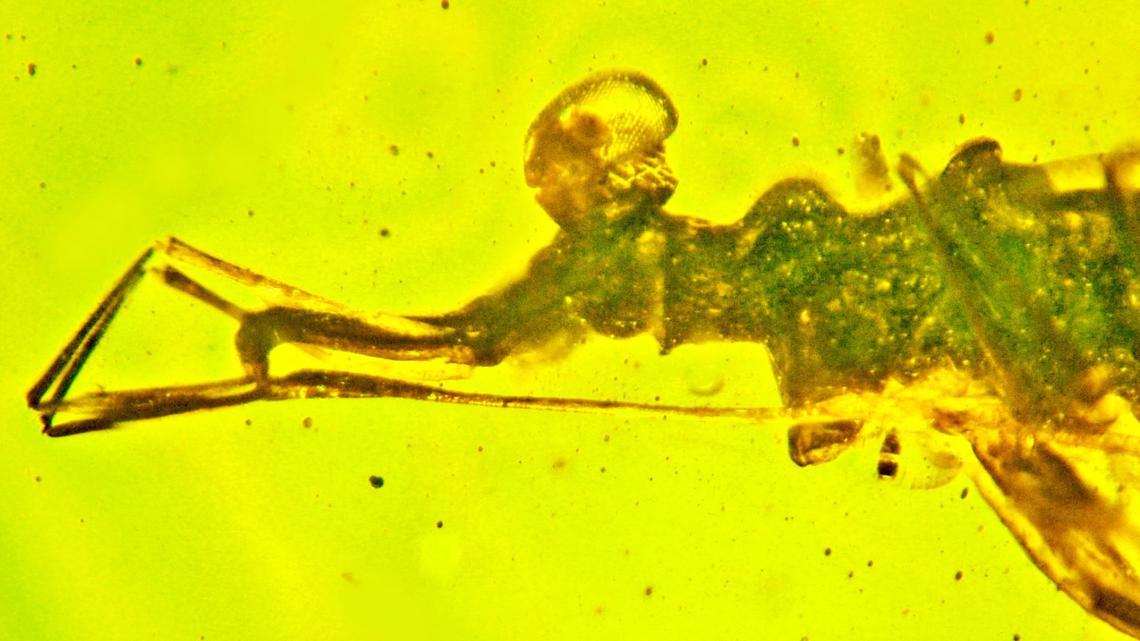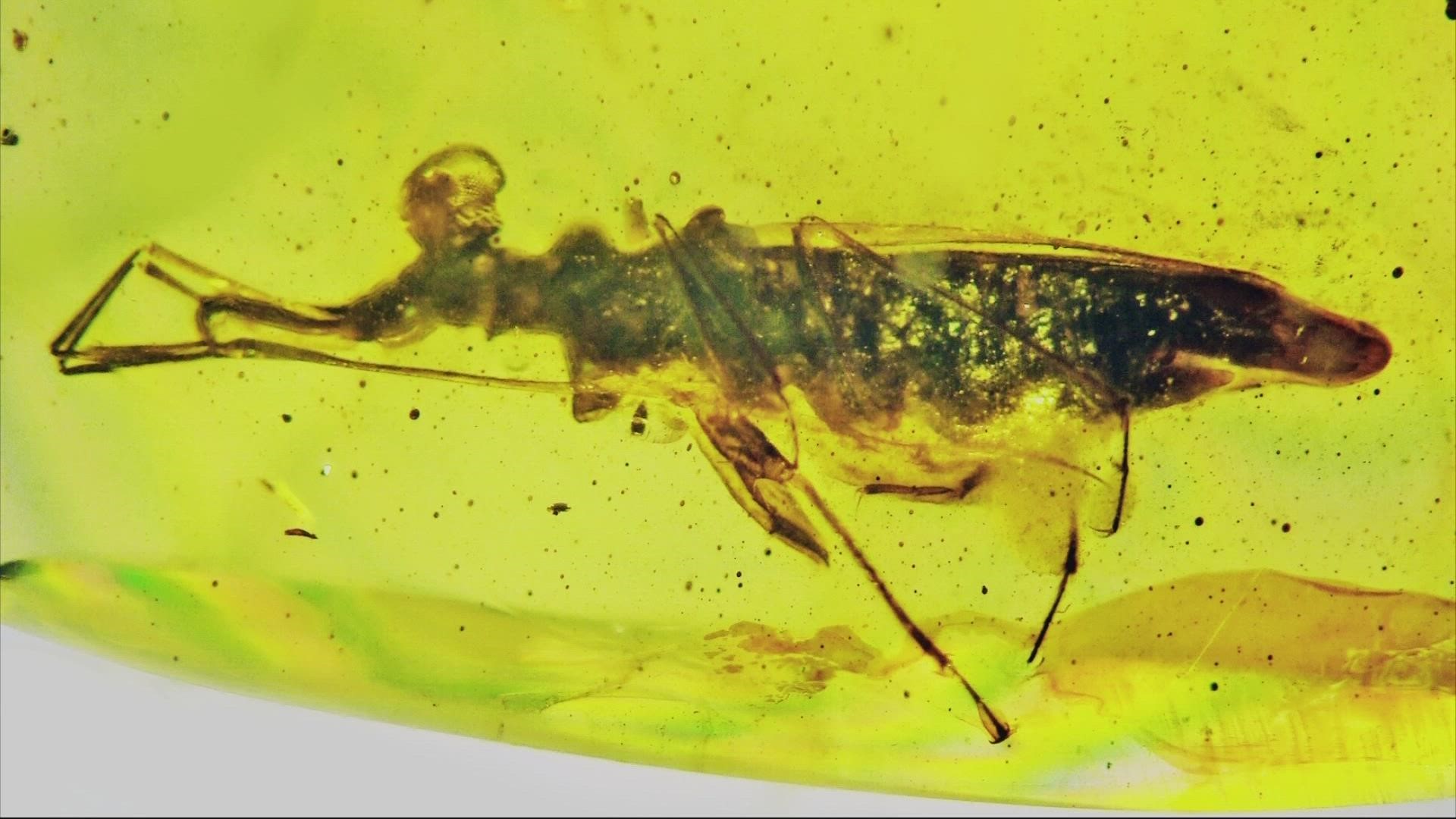CORVALLIS, Ore. — A newly identified ancient insect with an elongated body and head has a complicated name: palaeotanyrhina exophthalma. And it fascinates the Oregon State University professor who named it.
Professor Emeritus George Poinar has seen and discovered a lot in his long career as a researcher and entomologist. But this one is special.
The insect is 100 million years old, preserved in fossilized tree resin or “amber.” Poinar said one of the best parts about this insect is the eyes.
“I’d never seen any animal before that had eyes that were sitting up on its pedestals so it could see 360 degrees with both eyes,” said the 86-year-old researcher.


Professor Poinar said the 360-degree vision must have been great for this 5-millimeter-long bug to spot prey.
"And at the same time it could see if other predators were coming,” Poinar said.
Poinar and two others wrote up a paper on the bug that was published in the BioOne Complete journal last month. Along with a great deal of research, it gives a couple other looks at the well-preserved insect.
The OSU professor is also interested in the front legs of the creature, which the research team determined produced and excreted a sap or “goo” that helped capture the bug's prey.
Poinar said the amber-encased creature was obtained from someone in China, but figuring out its history and naming it was a thrill.
“It's great, it's like you're walking through a forest and all of a sudden you see something that you never saw before," he said. "Of course, in this case you're walking through a forest that's 100 million years old.”

